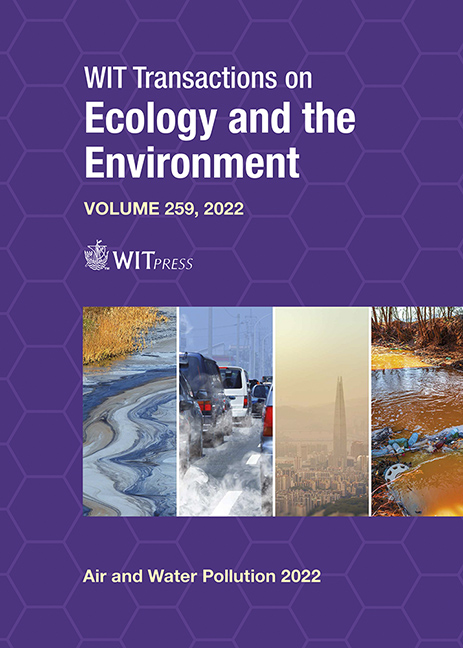LOCAL MONITORING OF TRAFFIC-RELATED AIR POLLUTION AROUND SCHOOLS IN SOUTH EAST LONDON, UK
Price
Free (open access)
Transaction
Volume
259
Pages
12
Page Range
75 - 86
Published
2022
Paper DOI
10.2495/AWP220071
Copyright
Author(s)
HO YIN WICKSON CHEUNG, LIORA MALKI-EPSHTEIN
Abstract
Outdoor air quality (OAQ) presents a significant challenge for public health globally, especially in urban areas, with road traffic acting as the primary contributor to air pollution. Several studies have documented the antagonistic relation between traffic-related air pollution (TRAP) and the impact on health, especially to vulnerable members of the population, particularly young pupils. Generally, TRAP could restrict the ability of schoolchildren to learn and, more importantly, cause detrimental respiratory disease in their later life. But little is known about the specific exposure of children commuting to school and during the school day and the impact this may have on their overall exposure to pollution at a crucial time in their development. This project has set out to examine the air quality across primary schools in south east London (due to their massively increasing amount of redevelopment and population) and assesses the variability of data found based on their geographic location and surroundings. Nitrogen dioxide (NO2) and PM contaminants (PM2.5 and PM10) were collected with diffusion tubes and portable monitoring equipment for eight schools across three local areas: Greenwich, Lewisham and Tower Hamlets. This study first examines the morphological features of the schools surrounding), then utilises two different methods to capture pollutant data. Moreover, comparing the obtained results with existing data from the London Air Quality Network (LAQN) to understand the differences in air quality pre- and post-pandemic. Most studies in this field have unfortunately neglected human exposure to pollutants and calculated referring to values from fixed monitoring stations. This paper introduces an alternative approach by calculating human exposure to air pollution from real-time data obtained when commuting around selected schools (driving routes and field walking).
Keywords
geographical feature, human exposure, schools, traffic related air pollution




